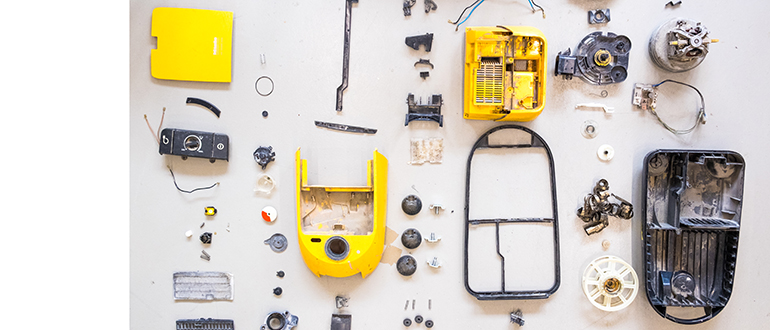Stavroula Panagiotidou and Camila Maria Mosto Zavala
Master Thesis – Environmental Engineering – 2018
Manufacturing of Electrical and Electronic products (e-products) requires valuable resources and rare earth elements. The consumption of e-products has increased and so has the flow of Electrical and Electronic waste (e-waste). Circular Economy (CE) is considered an alternative for the current linear system, that aims to limit resource scarcity by better environmental End-of-life (EoL) options. This report has as a goal to identify the barriers and possibilities of CE implementation regarding e-products in the case of reuse and remanufacturing.
Through the laboratory work, consisting in the dismantling of e-products, technological barriers as fragility of materials, design complexity and lack of modularization were identified. With data from the laboratory work, a Life Cycle Assessment (LCA) studying the environmental profitability of prolonging the use stage - through reuse and remanufacturing- for three e-products was conducted. Remanufacturing seems the best option, but several factors as the life extension, the remanufactured parts or the energy consumption, have to be considered.
A socioeconomic study was carried out through a survey and literature review. Among the identified socioeconomic barriers were the lack of knowledge, the lack of supportive legislative framework, the difficulty to coordinate new environmental needs with the needs of the existing market situation and a careless collection system. On the other hand, the identified socioeconomic possibilities rely mostly on the improvement of e-products design and knowledge acquisition among consumers and organizations. At the same time, legislative framework is aiming to control the design development and the raising concerns.
The proposed strategies are facilitating the repairing process, prolonging the life of the components, simplifying the dismantle, promoting modularization and standardization. This should be combined with the implication of the supply chain, so that public authorities promote and create legislation encouraging CE, changing the consumption patterns, changing the business model, improving the design for reuse and remanufacturing, and promote second-hand business.
